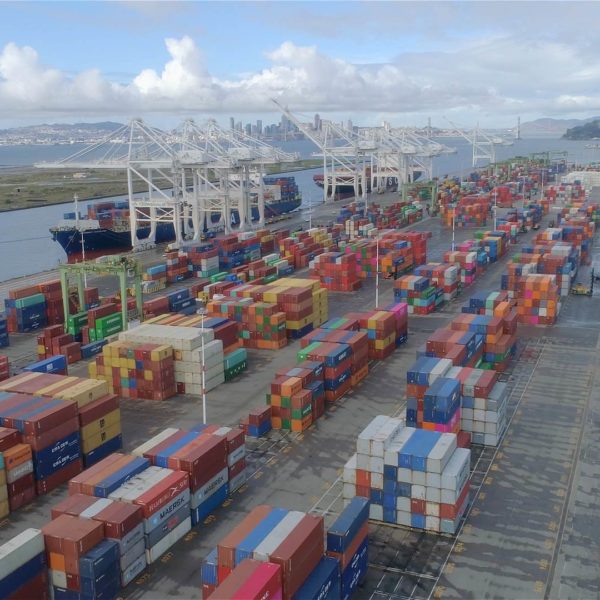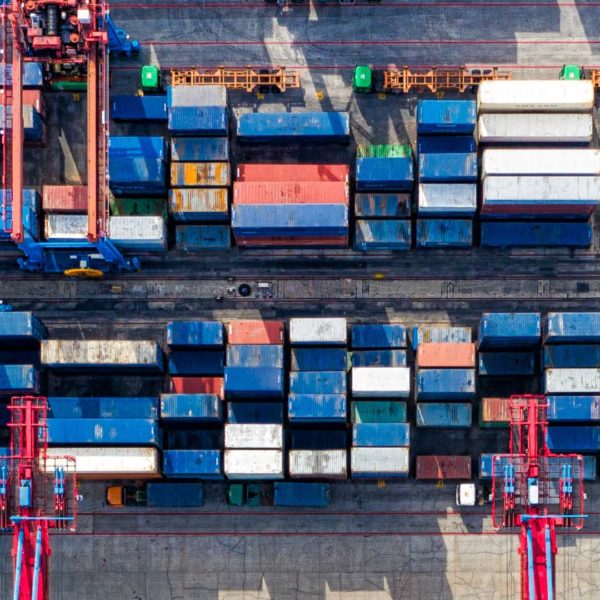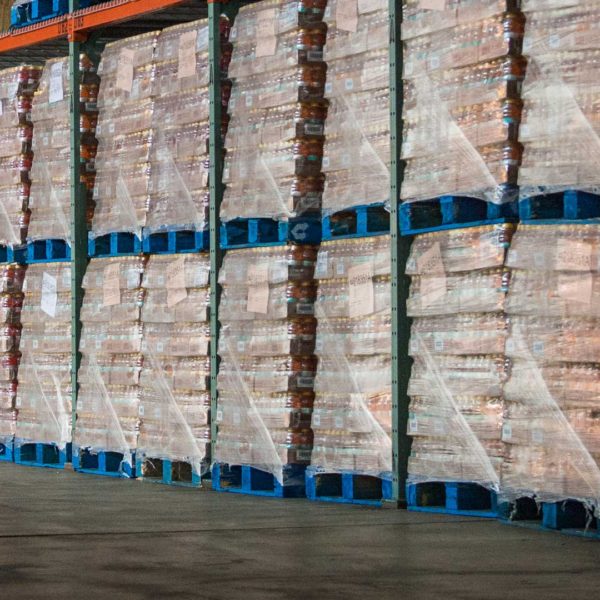Logistics and supply chain costs represent around 10-12% of the total purchase price of any item sold on average. This is a lot, and can lead to a massive percentage of your total profit being spent on the supply chain costs that go into getting your products to market. Many times reducing supply chain and logistics costs even mildly can significantly improve overall profitability.
The logistics and supply chain industry have an inherent volatility that varies with supply and demand, market conditions, political and governmental regulations, seasonality and weather.
The logistics spot market in particular is actually a pretty amazing example of mostly pure supply and demand at play. Let’s take a supply chain dive on lower logistics costs.
Introduce intermodal
Intermodal is process of transporting containers on trains for the long haul portion of the trip then utilizing trucks for the first and last mile elements of the shipments. These first and last mile moves take the container from its origin point to the nearest railroad terminal, then again from a rail terminal to the final destination. The origin and final destination can be any facility that a traditional truck would operate to. Typically intermodal is 10-20% more cost effective than trucks on routes longer than 500 miles. There are special circumstances that can change this price difference, at times more in favor of intermodal, other times less in favor, but as a general rule intermodal is much more cost efficient on cross country or long haul routes. A few intermodal routes which have an immense amount of volume are Los Angeles to Atlanta, Los Angeles to Chicago, Atlanta to Chicago, New York to Chicago.
In the last decade inland ports have become popular as a way to bypass congested city roads. This gives importers and exporters the ability to ship the freight immediately to an inland location once it is moved off the ship. Many times customs and any inspections etc required are carried out at the inland port instead of initial port of call. They present international shippers a cost effective and time sensitive alternative to moving freight inland large distances on trucks. A great example of an inland port is the Georgia inland port which allows freight transiting from the port of Savannah and headed north to bypass the awful Atlanta congestion. Not only does this result in fewer delays for the freight, but also drastically reduces the number of trucks on the road and decreases carbon emission along the route as trains are around 4x more efficient than trucks.
Cross border intermodal is also an effective method to reduce cross border Mexico trucking costs. Intermodal is also a more secure option, with less potential for cargo theft. Keep in mind cross border intermodal generally doesn’t stop at borders. So you’re cross border Mexico intermodal freight will continue moving while a trucking carrier will have to stop at the border.
Introducing intermodal as a mode diversification strategy on long haul freight lanes can effectively reduce overall supply chain costs. Intermodal capacity and pricing is less volatile than OTR trucking pricing as well, which presents shippers guaranteed capacity during shortages.
LTL vs FTL
Many shippers move a lot of LTL freight in addition to FTL freight, also there are a huge number of shippers that only ship LTL and simply don’t have the volumes for FTL. At times, LTL freight can be quite expensive and often service can be spotty with missed delivery dates very common especially during holiday rushes.
If you are experiencing higher than normal rates for your LTL shipments, consider looking at different carriers and negotiating, however many times the carrier simply doesn’t have their assets positioned to handle the volume spike. Another option is to ship your LTL shipment via FTL. While this doesn’t generally make sense, if your LTL pricing has experienced a rapid rise, for larger LTL shipments it can absolutely be cheaper to ship via FTL. FTL pricing varies a lot depending on the lane, time of year, demand and capacity available, but for larger LTL shipments, say over 8 or 10 pallets, it’s more common than you might think to have more favorable pricing on FTL services. Don’t forget that an FTL shipment is only moving your freight, so you’ll get better service and better on time performance.
While this isn’t an option we’d recommended using all the time, it can be an effective safety valve for LTL rates and service issues and should be considered as needed.
For cross border shipments such as Mexico to US shipping, FTL and intermodal represent another potential advantage for shippers moving lots of LTL traffic. Mexico to US trucking as FTL will be more secure, faster and generally less costly per volume and weight than cross border LTL.
Air vs Ocean
Ocean freight as most know is much cheaper than air freight yet also much slower. Generally you need to plan on a month long shipment time on transpacific routes. Shippers often result to air freight when they experience inventory or part shortages that are needed immediately. It’s an expensive exercise to ship peak season at the last minute via air freight, but the alternative many times is worse.
A recent example of “emergency” air freight was Mazda maintaining production of their cx-30 at a factory in Japan. A key Chinese supplier was shutdown due to coronavirus, immediately Mazda flew the required tooling to an available factory in Mexico, then flew the finished sub assembly parts to Japan for final assembly. While this was a drastically expensive operation, shutting down a major autofacility was simply not an option.
Traditionally inventory planning as well as working capital and inventory costs are a major factory in planning how much inventory to carry. Modern computer based warehouse management systems and inventory management systems make this much easier. They can use historic data to accurately predict demand curves and generate notifications when SKU’s drop below a threshold. Maintaining the lowest level of inventory as possible is generally seen as the most cost efficient method, however if an unexpected event occurs such as a factory shutdown, transportation provider issues, or a demand spike, you can be left with little alternative but to utilize air freight. Like everything there is a cost benefit analysis that must be made, but we’ve seen companies recently, particularly following COVID19’s outbreak, prefer to maintain higher levels of inventory as a hedge against disruptions.
When planning inventory levels, take a hard look at how many times you’ve had to rush shipments and what that has cost your firm. If it is a yearly or seasonal occurrence, consider order more inventory well ahead of time and keeping it on a ship.

Warehouse Location
Distribution modeling and planning can quickly become very complicated, but is a necessary part of cost forecasting and demand planning. While there is no “right” answer, there are several strategies that are highly dependent on your company’s unique situation.
Some firms prefer to maintain inventory in only a few locations, for example one warehouse, or one on the west coast, one of the east coast. This generally works well, particularly so if the warehouses are in cities that have favorable transportation lanes to your common destination.
Other firms prefer to keep smaller amounts of inventory in shared or leased warehouses spread out. This is based on their cost analysis that shipping to warehouses and renting warehouse space is less costly than spending more on final mile delivery costs if the length of the final mile trip is long.
Complication quickly arise when you start taking into account multiple products, raw materials, import and export port locations, any private fleets and transportation hubs for common modes or carriers. Keep in mind entire teams both inside and outside the company will work to solve this problem and continue to track and optimize the solutions over time for large companies like Home Depot or Best Buy.
Amazon’s 2 day shipping has changed the entire logistics industry in the USA, pressuring many smaller companies to reduce their own shipping time, largely driving up logistics costs to these companies. One potentially successful way to reduce shipping fees is to place the inventory as close as possible to the final end user. Again this can be challenging if you sell a large number of products, as likely the geographic distribution of them varies, thus your fulfillment procedures must vary by item as well.
Logistics and Supply Chain Data Analysis and Analytics
Data collection and analysis is the most important tool in your shed when optimizing your supply chain. Many companies collect data, but not as many as you might think effectively analyze it and use it as a basis for decision making.
Often data collection is fragmented and not centrally organized in a manner than can be searched and benchmarked.
Reducing logistics costs is a major focus for many firms globally. The key is to never stop optimizing your supply chain and fulfillment procedures based on your data. Markets change, customer demand shifts, freight markets change and so will your supply chain. What was optimized 6 months ago is likely not currently. This is a constant process that will vary over time, but if supply chain efficiency remains a priority, your company will make better use of its invested capital and reduce input costs on what you sell.
About Zmodal
Zmodal is a digitally enabled multi modal logistics provider that services shipper small and large across multiple modes of transportation. Our dashboard based system gives you easy access to intermodal pricing and booking as well as simple and easy data analysis, document management and billing. Converting long haul freight or cross country freight to intermodal has never been easier! Take a look HERE.



